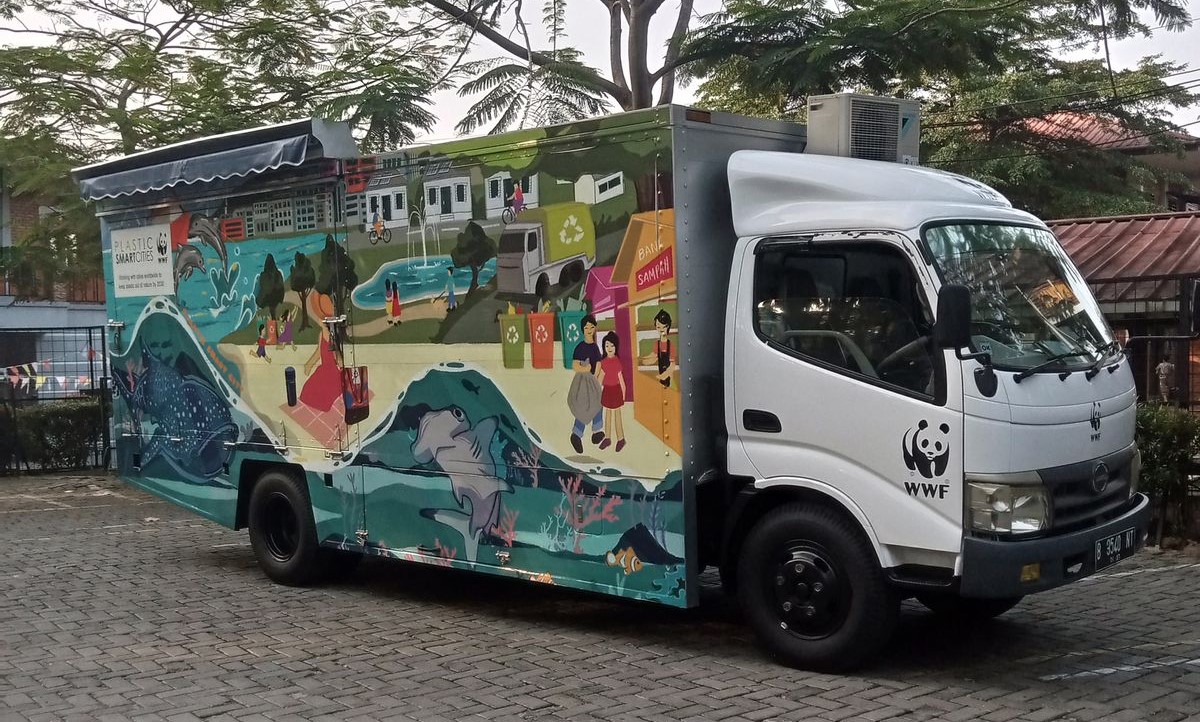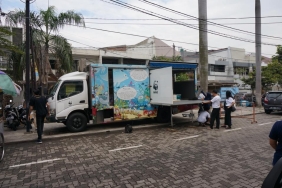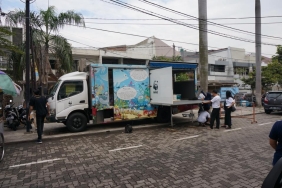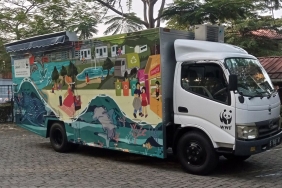GETTING TO KNOW BIODIVERSITY WITH PANDA MOBILE AT CIKAL AMRI SCHOOL
By: Suci Dwi Pangestu (Volunteer Panda Mobile)
In front of about 140 6th grade elementary and 7th grade junior high school students, WWF-Indonesia's Panda Mobile shared information about biodiversity at Cikal Amri School, East Jakarta, last Monday (21/05).
In the talk show, Hanna Astaranti, WWF-Indonesia Mobile Panda Coordinator explained about biodiversity, including the types of biodiversity, threats, and solutions to preserve biodiversity.
After the talk show was over, the students were immediately directed and divided by class groups to the activity posts organized by WWF-Indonesia's Panda Mobile. There were game stations and stations for recycling activities. At the game post, three cricket games were available, each with the theme of orangutan, tiger with Indonesian caption, and tiger with English caption. The students were very enthusiastic because they were given the opportunity to play while learning. Many students queued to get their turn to play. At the same time, there was a question and answer session about umbrella animals with Panda Mobile's volunteers.
In the post about recycling activities, the students were taught to make cloth bags made from used t-shirts. Before starting the recycling activity, Suci, the Panda Mobile volunteer in charge of the post, explained the purpose of the recycling activity carried out that day. Suci explained that making cloth bags from used t-shirts is also a concrete action as a living being to maintain the sustainability of biodiversity because it can reduce the use of plastic bags. Indirectly, it can also protect sea turtles from the dangers of plastic thrown into the sea.
The recycling activity went well. There were several children who poured their creativity by decorating their cloth bags using crayons, markers, or name stickers given by WWF-Indonesia. Alisya and Windy, students of Sekolah Cikal Amri said, "We are so happy today, because we learned something new from you, Kak. We promise not to use plastic again to bring our stuff.".
At the end of each activity, the students were invited to care about the environment where they live. Humans live together with other creatures on Earth so we must take care of each other so that the Earth is also protected. Another message they got was that the use of plastic and bottle packaging can endanger other living things, especially animals that live in the sea. This activity is expected to provide positive benefits to students and schools. This kind of activity is also expected to continue to be carried out as a routine activity for alternative learning media for students about the environment.





